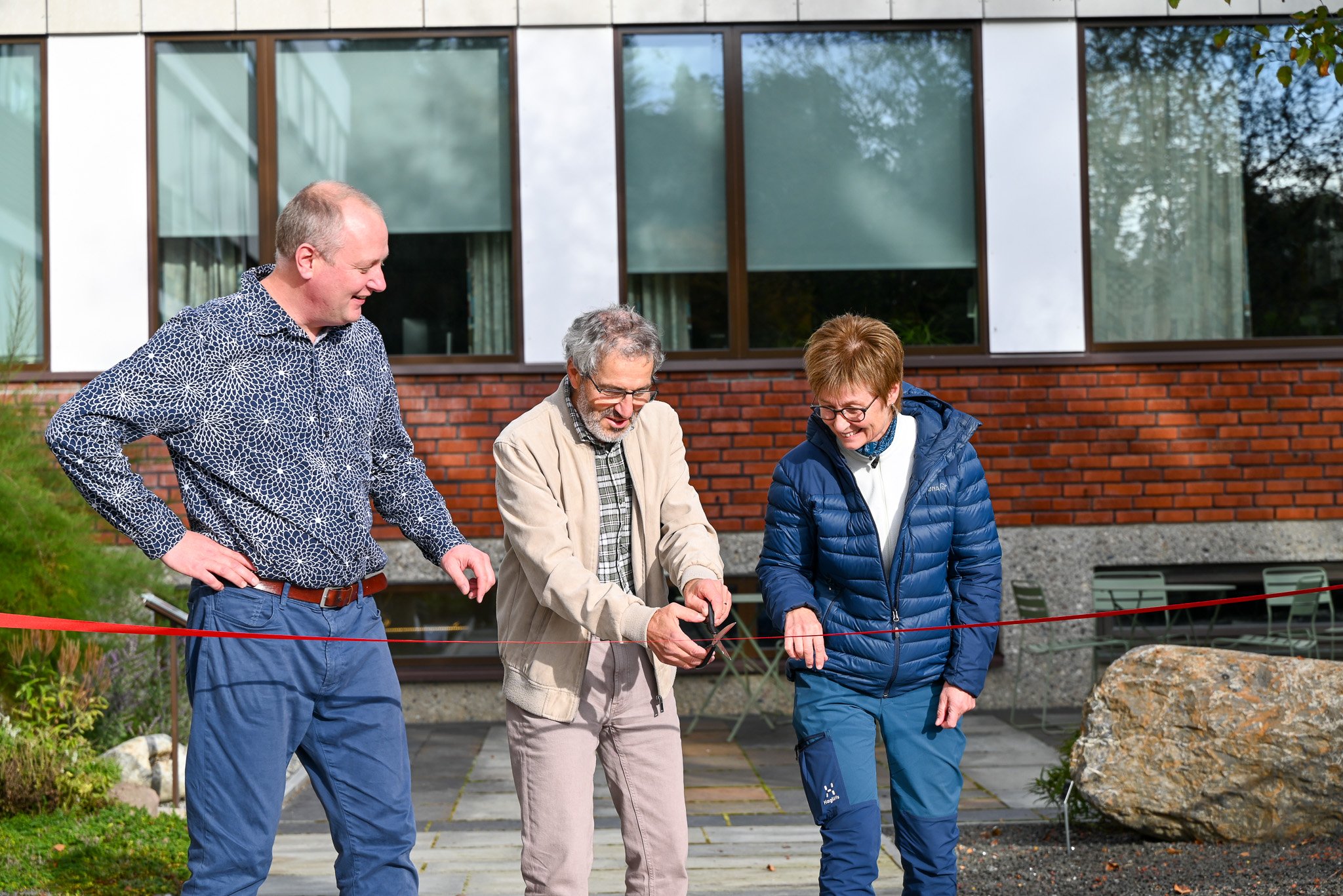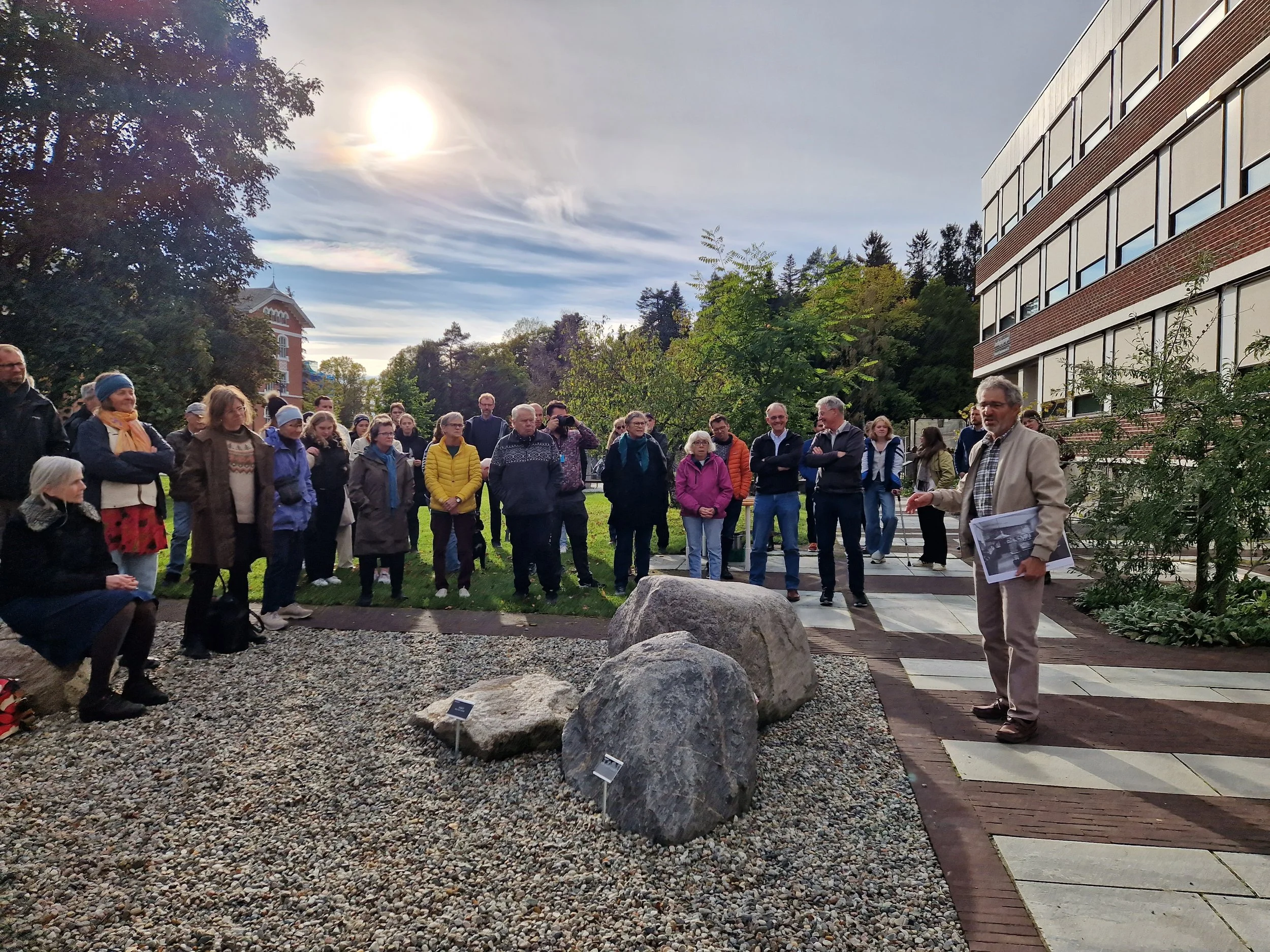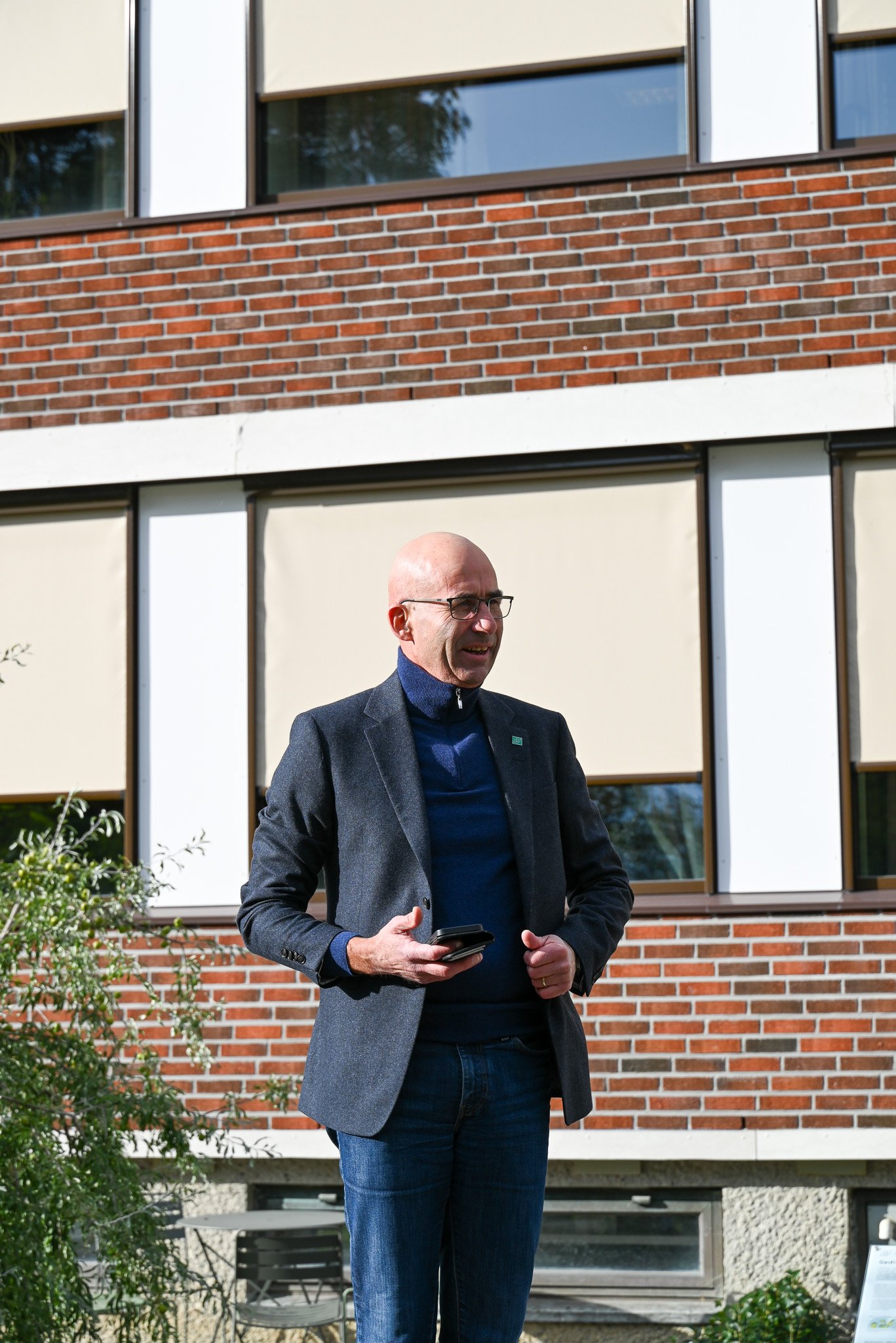THE OPENING OF THE GEOLOGY GARDEN

THE OPENING OF THE GEOLOGY GARDEN
And with that, the Geology Garden is declared open! If you as a reader did not catch the extraordinary event at 15.00 on the otherwise usual Monday, 9th of October. This was the official cord-cutting which opened the so-called Geology Garden, outside Jordfagsbygningen. Geology Day was on the 10th of October, but in the geological time scale such a slip in dates is perfectly fine.
Journalist: Ane Mathilde Runge Christensen
Foto: NMBU
Translator: Rebekka Berg
Web-distributør: Martha Ingeborg Evensen
The story
If we consider geology exhibits on campus under the historical lens, this is only the last of three. We even had a separate geology room in the Clock Building once upon a time, where exhibitions of minerals and rocks were available for everyone to look at through glass cases. The first exhibition on campus is said to have been created at the beginning of the 20th century. The park is said to have stood on the east side of the Clock Building and was set up by Bjørlykke. This was later replaced in the 1970s, located in the same area. The exhibition was organized by the well-known Norwegian geologist, Steinar Skjeseth, and suffered a rather strange fate where it was replaced by the tap changer we still have there today. Stones from this exhibition have nevertheless been taken care of and are on display in the new Geology Garden.
The solid exhibition
This has been a project that came into view more practically from 2018. But let’s take a step back to admire the time travel the park has been through, given the age of the park’s centrepiece - the rocks. The oldest of the representatives is well over 1800 million years old (we’re talking Precambrian age, for those particularly interested). One can say that this has been a protracted and dynamic affair, with help from both plate tectonics and glacial activity. Many of the stones in the exhibition are shifting blocks, transported by the glacier, all the way from the bedrock in Jotunheimen to the area around Ås, 11,500 years ago. Thus, the project has also saved some funds for transport for moving tons of stone - a form of sustainable transport in line with NMBU’s fronted green profile. Together with stone from blast sites, this exhibition takes us on a chronological journey. Right from the bedrock from prehistoric times (1800 million years) to Cambrosilurian rocks where you can see fossils, to the Permian period in the Oslo field (260 million years). The walk begins at the side entrance at Jordfagsbygningen, and with the help of signs, it gives a good insight into geological changes over time on an overall global level, but still with the focus on Norway’s geological history. The crowning achievement is the unofficial pink Norwegian national mineral Thulitt, which was given as a gift from the Geological Survey of Norway in Trondheim. The communication and compilation of the geological information in the park is largely under the direction of the geologist and associate professor Michael Heim.
Mange av steinene i utstillingen er flyttblokker transportert av isbreen, helt fra grunnfjellet i Jotunheimen til området rundt Ås, for 11 500 år siden. Dermed har prosjektet også spart en del midler til transport for flytting av tonn med stein; en form for bærekraftig transport i tråd med NMBUs frontede grønne profil. Sammen med stein fra sprengningsarbeid, tar denne utstillingen oss med på en kronologisk reise. Helt fra grunnfjellet fra urtiden (1 800 millioner år), til kambrosilurske bergarter hvor du kan se fossiler, til permperioden i Oslofeltet (260 millioner år). Vandringen begynner ved sideinngangen til Jordfagbygget, og ved hjelp av skilt gis det et godt innblikk i geologiske endringer over tid; på overordnet globalt nivå, men likevel med hovedfokus på Norges geologiske historie. Krona på verket er det uoffisielle rosa norske nasjonalmineralet Thulitt, som ble gitt i gave fra Norges geologiske undersøkelse i Trondheim. Formidlingen og sammenstillingen av det geologiske i parken, er i stor grad i regi av geologen og førsteamanuensis Michael Heim.
How did the garden come about?
This project has not only aimed to create a geological park - hence the name Geological Garden - emphasis has also been placed on good interdisciplinary collaboration between the faculties and various subject areas. LANDSAM and the Institute of Landscape Architecture, together with MINA and the park department at NMBU, have prepared a park for the curious and those who want to experience a breath of fresh air through a zen garden on campus. The garden has functioned as a classroom from the start, first for Landscape Architecture students, and will continue to function as a classroom for stone-crazy students for a long time to come.
The geology garden is more than just rocks
For those interested in plants, the plants in the park are also chronologically placed in connection with the dating of the stones. The most striking of these is the temple tree (Ginkgo biloba), which is a descendant of the temple trees that survived the atomic bomb in Hiroshima. Despite the fact that you are in a park with large time perspectives, the temple tree is a reflection of the here and now. Among other things, it can open for reflection on how, over a short period of time, we have managed to make major interventions, including geological ones. The seed of the temple tree is a symbol of peace, something the world will always need a reminder of. We are constantly experiencing that conflicts arise and form a large part of the media image in our everyday life.
This is precisely why parks such as the Geology Garden are needed. It promotes knowledge and an outdoor space for calmness, in an otherwise hectic everyday life with lots of information on all sides. If you want to go on a geological journey through time, at your leisure, the Geology Garden is for you!!






